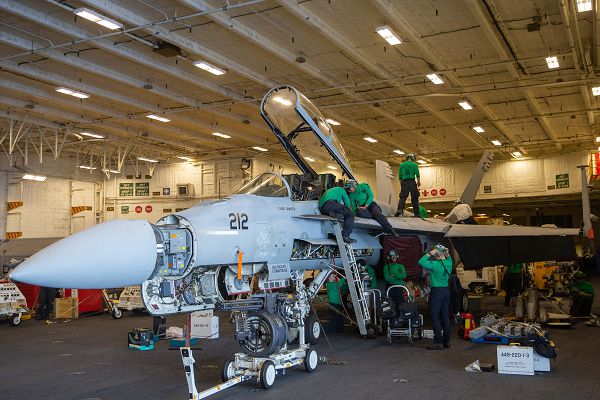
Bay of Biscay, Spain. (June 14, 2023) The world’s most advanced aircraft carrier set sail into history this month, its launch signifying a generational leap in our nation’s ability to project power around the world. In this photo by MC2 Nolan Pennington, Sailors from the "Black Lions" of Strike Fighter Squadron 213 conduct routine maintenance on an F/A-18F Super Hornet in the hangar bay of the world's largest aircraft carrier, USS Gerald R. Ford. Fighter Squadron 213 Black Lions fly the two seat F/A 18 strike fighter which is designed for traditional air superiority, reconnaissance, and close air support. The Super Hornet can also provide forward air control (airborne), air defense suppression, and day/night precision strikes in defense of the fleet.
Gerald R. Ford is the U.S. Navy's newest and most advanced aircraft carrier and sports numerous technological upgrades making it the most sophisticated carrier in history. The Ford is named after our 38th President who served during World War II and whose naval service included combat duty aboard the light aircraft carrier Monterrey in the Pacific theater.
Today, the USS Ford is equipped with state-of-the-art radars and a new launch system to replace the traditional steam catapults. This new design free’s up considerable space below deck allowing the carrier to accomplish 25 percent more landings with fewer crewmembers. At over 1,100 feet long and towering 250 feet above the waves, the Ford is a floating city of over 4,500 Sailors and Marines ready to fight anywhere in the world. She is powered by twin nuclear reactors and can reach speeds of up to 35 mph.
The Ford replaces the veritable USS Enterprise after her 51 years of service. This new carrier strike group demonstrates the Navy’s capacity to project power on a global scale.
.


